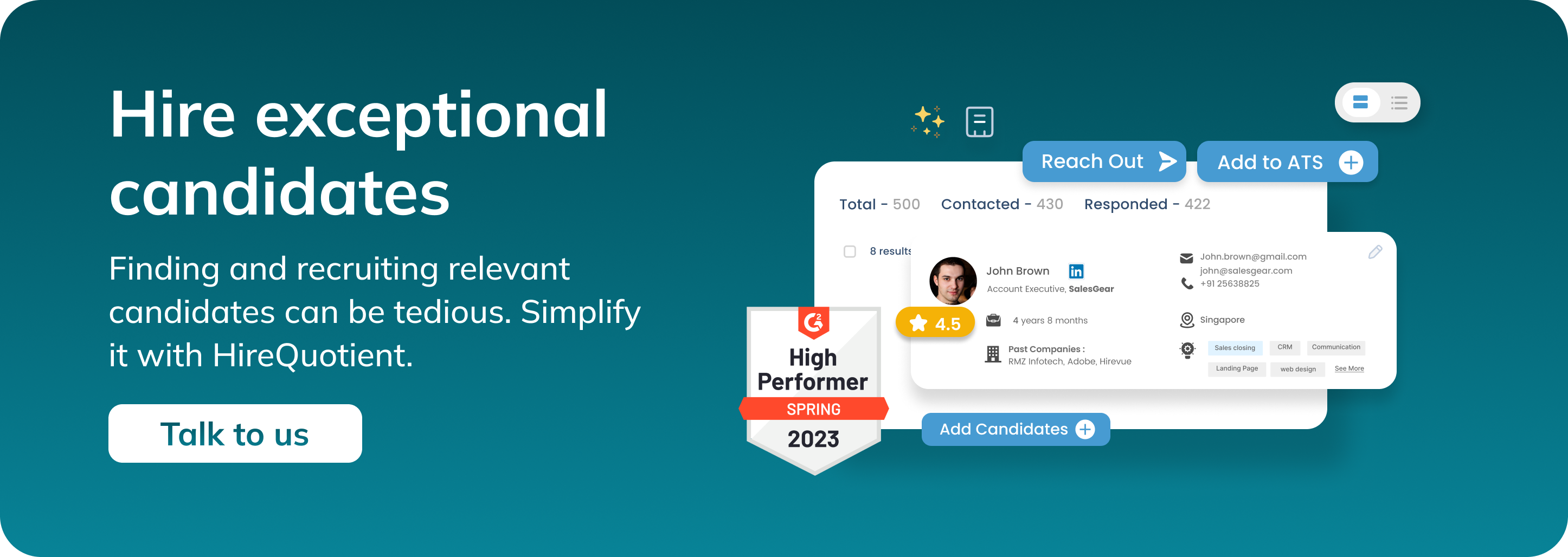What is the Human Resource Planning Process?
Published on June 9th, 2023
In today's dynamic business landscape, organizations face numerous challenges when it comes to managing their most valuable asset: their people. To thrive and remain competitive, businesses must strategically plan and align their human resources with their overall organizational strategy. This is where the human resource planning process comes into play. In this comprehensive blog, we will explore the essential steps of the human resource planning process and understand how it contributes to organizational success.
Environmental Analysis
The first step in the human resource planning process is conducting an environmental analysis. This involves assessing both external and internal factors that may impact the organization's human resource needs. External factors may include economic conditions, industry trends, technological advancements, and demographic changes. Internal factors involve analyzing the organization's goals, strategies, and internal capabilities. By understanding the external and internal environment, HR professionals can anticipate future workforce demands and challenges.
HR Strategy Development
Once the environmental analysis is complete, the next step is to develop a human resource strategy that aligns with the organization's overall business strategy. HR professionals need a clear understanding of the organization's strategic objectives, goals, and priorities. This includes determining the workforce requirements to support the strategy, identifying critical roles, and defining the competencies and skills needed in the workforce. The HR strategy serves as a roadmap for all subsequent HR planning activities.
Workforce Planning
The core of the human resource planning process is workforce planning. This step involves assessing the current workforce and identifying any gaps between the existing workforce and the projected future needs of the organization. HR professionals analyze employee data, including skills, competencies, performance, and potential. They also consider factors such as retirements, turnover rates, promotions, and anticipated growth. Workforce planning enables organizations to determine the quantity and quality of talent required to achieve strategic objectives.
Talent Acquisition and Recruitment
Based on the workforce planning analysis, organizations can develop effective talent acquisition and recruitment strategies. This includes determining the most appropriate recruitment channels, creating compelling employer branding, and implementing a comprehensive sourcing and selection process. The goal is to attract and acquire top talent that matches the required skills and competencies identified in the workforce planning phase.
Talent Development and Training
To bridge any skill gaps identified during workforce planning, organizations must focus on talent development and training. This step involves designing and implementing training programs, career development initiatives, and performance management systems. HR professionals collaborate with managers and employees to create individual development plans and provide learning opportunities. Talent development ensures that the existing workforce acquires the necessary skills and competencies to meet current and future organizational needs.
Succession Planning
Succession planning is crucial for ensuring continuity in leadership and critical positions. Organizations identify key roles and develop succession plans to groom potential successors. This involves assessing high-potential employees, providing them with appropriate development opportunities, and creating career paths for advancement. Succession planning minimizes disruption and maintains stability when key employees retire, leave the organization, or transition to new roles.
Monitoring and Evaluation
Throughout the human resource planning process, it is vital to monitor and evaluate the effectiveness of the implemented strategies. HR professionals track key workforce metrics, analyze the impact of HR initiatives on business outcomes, and make necessary adjustments. Continuous evaluation ensures that the HR planning process remains aligned with the changing needs of the organization and enables data-driven decision-making.
Why HireQuotient?
HireQuotient is a groundbreaking HR-tech platform that revolutionizes the recruitment process by offering a comprehensive suite of tools, designed to simplify various stages of recruitment and assist in human resource planning. Let's delve deeper into the different features provided by HireQuotient:
EasySource
HireQuotient's EasySource is an innovative talent sourcing platform that automates candidate search, which is crucial for effective human resource planning. By leveraging advanced technologies such as ChatGPT and Generative AI, recruiters can easily and efficiently find and engage with potential candidates. EasySource simplifies the process of connecting with candidates who meet the desired criteria, thereby enhancing the overall sourcing efforts.
EasyAssess
Streamlining the screening process is a vital aspect of human resource planning, and HireQuotient addresses this with EasyAssess, a skills-based assessment platform. Recruiters can customize assessments tailored specifically for non-technical roles, enabling them to effectively evaluate candidates. EasyAssess provides comprehensive, data-driven reports with candidate results, empowering recruiters to make informed decisions during the selection process.
EasyInterview
In human resource planning, managing interview schedules can be a time-consuming task. HireQuotient's EasyInterview offers a convenient solution by providing a one-way video interview platform. Recruiters can save valuable time and allocate it to other critical tasks. With EasyInterview, candidates are presented with pre-recorded interview questions, and they can record their responses at their convenience. Recruiters can then review these video interviews at their own pace, offering flexibility and efficiency throughout the interview process.
HireQuotient's suite of tools ensures a seamless and streamlined recruitment experience, aligning with the objectives of human resource planning. By leveraging advanced technologies, recruiters can enhance their sourcing efforts, accurately assess candidates' skills, and simplify the interview process. With HireQuotient, organizations can optimize their recruitment strategies, save time, and make more informed hiring decisions, thereby supporting effective human resource planning.
Conclusion
The human resource planning process plays a critical role in aligning an organization's workforce with its strategic goals and objectives. By conducting an environmental analysis, developing an HR strategy, performing workforce planning, focusing on talent acquisition and development, implementing succession plans, and monitoring progress, organizations can optimize their human resources and gain a competitive advantage. Effective human resource planning enables organizations to have the right people with the right skills at the right time, ultimately driving organizational success.
Human resource planning is not a one-time activity but an ongoing process that requires continuous monitoring, evaluation, and adaptation to changing circumstances. By incorporating the steps outlined in this blog, organizations can effectively align their human resources with their strategic direction, leading to improved employee productivity, engagement, and overall business performance.
Remember, human resource planning is not just an HR function but a collaborative effort involving HR professionals, managers, and employees across the organization. It requires open communication, data-driven decision-making, and a proactive approach to address future workforce needs.
In conclusion, strategic human resource planning is a vital process that enables organizations to anticipate and meet their current and future talent requirements. By conducting environmental analysis, developing an HR strategy, performing workforce planning, focusing on talent acquisition and development, implementing succession plans, and monitoring progress, organizations can ensure they have the right people with the right skills in the right positions. As the business landscape continues to evolve, effective human resource planning becomes increasingly crucial for organizations to stay agile, competitive, and successful in achieving their strategic goals.
Authors

Radhika Sarraf
Radhika Sarraf is a content specialist and a woman of many passions who currently works at HireQuotient, a leading recruitment SaaS company. She is a versatile writer with experience in creating compelling articles, blogs, social media posts, and marketing collaterals.

Hire the best without stress
Ask us how
Never Miss The Updates
We cover all recruitment, talent analytics, L&D, DEI, pre-employment, candidate screening, and hiring tools. Join our force & subscribe now!
Stay On Top Of Everything In HR
